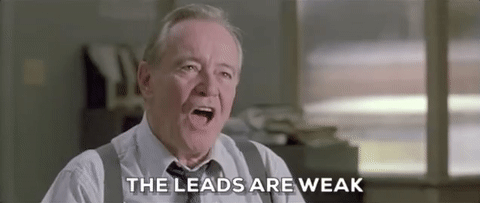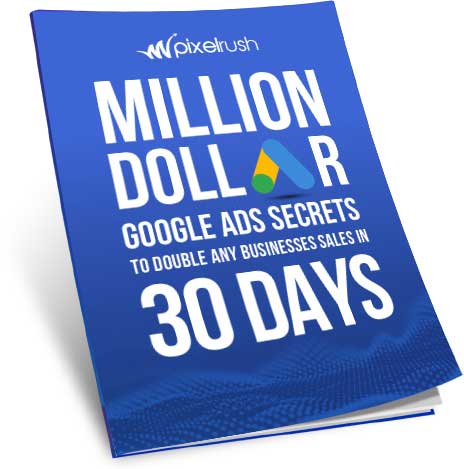Business owners wrongly assume three things when it comes to building their website:
- That simply building a new website will bring new customers
- That your visitors (potential customers) actually care about flashy design trends (like sliders and animations)
- That saying generic feel-good things like “we are the best” will convince visitors to buy from you.
Hint: All of the above are untrue.
In fact, when I speak with prospects, more often than not the conversation about their new website almost always comes down to how much it costs rather than how many sales it will generate. I hear things like:
- “My neighbours son offered to build our website for 500 bucks.”
- “I received two other quotes, both of them were substantially less than yours.”
- “I can buy a theme online for less than 100 bucks.”
But let’s be honest, these are often the same people saying six months later that “my website doesn’t get any traffic“, “my visitors don’t convert” or even worse “my campaigns are completely unprofitable”.

You see, your website is the foundation of your success online, and when you get it wrong you leave a huge amount of money on the table. But when you get it right, it can quickly become one of the most cost effective investments your business will ever make.
I always say that the cost of a website that never converts is always an expense.
But a high performing website doesn’t happen by accident. Instead, it takes experience to create a design that boosts your revenue and ensures your brand stands out.
7 Elements of a High-Performance Website
The beauty of a well-planned website is that it grabs your visitors’ attention right from the start and makes it easy for them to say, “Yes, this is what I need”. Your content, design and tech all work seamlessly.
Keeping in mind that your time is important, here are the seven things I think you need to focus on first:
1. The 5 Second Test
Too many business owners consider content to be an after-thought. Something to slap up once the design is complete. The truth is that content plays a pivotal role in whether potential leads can find your website, and even more importantly, whether they will be converted into customers.
To throw another analogy your way, you can think of your website a bit like a dating profile. While I’m certainly not the authority on dating advice, I do know that much like in business, first impressions are everything! You, or your website, have approximately five seconds to capture their attention and reassure them they are in the right spot.
5 seconds. That’s it.
2. Your Headline & Copy
You want a strong, benefits-focused headline. Skip the “We’re the best” or “Welcome” type of fluff. Instead, focus on your target customer. Remember if you speak to everyone, you speak to no one.
What does your ideal customer want? How can you help them? How is your product or service going to solve their big problems right now?
I know one thing for sure – if you don’t capture my attention quickly, then I’m going to bounce.
If you’re a dentist who specialises in paediatric dental care, then you can open with something like, “Helping children enjoy the dentist since 2010″. Then, you share how you help put children at ease and relax, maybe even have fun at their dental visit.
Show them your testimonials from other happy parents (and their children!). Keep your contact info prominent on every page.
Ask yourself if your copy shows the benefits of your product or service. Does it show social proof in the form of believable testimonials? Does it present you as credible and trustworthy? Do you have a relevant call-to-action on each page?
We’ll share more about those calls-to-action in a moment, but for now, let’s talk design.

3. Clean Design
If you’ve ever seen websites from the dark, early days of the web, most of them were borderline ugly. Fonts of all types, multi-coloured (not in a good way) and a sense of design that looked like something from a preschool art class.
Today’s websites are clean and modern. Most load with a light (or white) background, with a hero image at the top and a strong call-to-action, or a tagline, or both.
If you’ve already worked with a designer, then you likely have brand colours and a logo in place. You may have images chosen (more on those below). Maybe you have a snazzy tagline already.
If not, then keep our conversion guide in mind. Above all, stay focused on what you want your visitor to do, keep it very simple and let your design make all of your strongest points very easy to digest.
4. Call-to-Action
Make sure every page on your website has a purpose. Remember that every page is a potential doorway into your website, not just your home page.
Your content pages should incorporate what is referred to as a “call-to-action”, which will usually nudge the visitor towards some form of engagement. What action do you want your visitors to take?
Every customer has what I call a “virtual checklist”; it’s their list of critical benefits or features they are searching for that they feel will help solve their big problem. The content on your site needs to put your visitor at ease and reassure them that you’re trustworthy and your product or service ticks the boxes.
Your calls-to-action constantly remind them that when you’ve ticked enough of their boxes, then they should take the action you want them to take. We typically recommend one primary call-to-action for customers who are ready to buy, and then a secondary call-to-action for those that aren’t, such as an e-book opt-in which subscribes them to your newsletter.

5. Specific Landing Pages
Have you ever wondered if a landing page strategy is the right move for your business?
Successful lead-generating websites have specific landing pages where you can drive traffic to. These pages are separate from your content pages and have one purpose, which is to invite the reader to DO something. That “something” might be to sign up for your webinar, join your email list, buy a product, etc.
There are proven ways to design a high-converting landing page and here are a few of them:
- Match your content to the ad with one clear action – don’t send paid traffic to your home page, send them to specific content that fulfills on the promise in the ad. If you’re advertising a car mod, send them to the product. Make it easy for your customers to buy.
- Use professional quality images that match your brand.
- Use social proof in the form of testimonials.
- Use benefit-focused copy that shows your visitor how you’ve helped similar people and how it will work for them.
- Use your logo and brand colours to keep the page cohesive with your site.
- Remove navigation – keep the action focused on one desired outcome.
Implement these tips and you’re on your way to creating high-performance landing pages that convert.
6. Limit Use of Stock
Images are a necessity, but you’re going to need to put some thought into which ones you choose.
We’ve all seen websites chock full of cheesy stock photos, right? This is what we want to avoid. Not only do they reduce trust, they also make your brand look exactly like that of your competitors.
Ideally, you’ll have your own photos from a professional photo shoot. But even then, you may still need a couple of stock photos to fill in the gaps. Just keep it to a minimum!
I’ve seen some websites double their conversion rates overnight simply by replacing stock images with professional team photos.
Likewise, you don’t want a hodgepodge of pretty images just because you like them. Keep your customer in mind. What will reassure them that you’re a trusted business and make them believe what you’re saying?

7. Make It Fast
Speaking of speed, did you know that for every 2 seconds it takes for your site to load, you lose 20% of your potential visitors? Plus, Google has admitted that loading speed is a ranking factor when it comes to SEO and with the 2018 “mobile-first” initiative, it’s only going to become more important.
One factor that affects your site speed is those images. Make sure they’re optimised for speed so they don’t slow your site down! I’ve seen some websites that are over 10MB in size – we recommend less than 2.
More importantly, the thing to remember is that slow-loading images are one of the biggest reasons websites lose potential visitors; this is one of the big reasons as to why we hate sliders too.
Not only do sliders reduce your load time, they also waste critical space above the fold which should be for driving conversions.
Turn Your Website Into A Lead Magnet
These seven tips are just a starting point and your site won’t be a lead magnet overnight. But if your website isn’t providing a return on your investment, that’s a big problem and you need to act quickly.
I don’t believe in building websites as a presence and neither should you. Ask yourself: why am I building or redesigning my website? 99.9% of the time it’s because you’re looking for more leads and sales.
Of course, if you don’t have time to deal with this yourself, then it’s time to get in touch with a professional. If you’re ready to get serious about an under-performing website, set up a consultation and we’ll get you on the right track.
Be careful, once the leads come knocking they might not stop and you’ll begin to realise just how much you’ve been missing all along.


